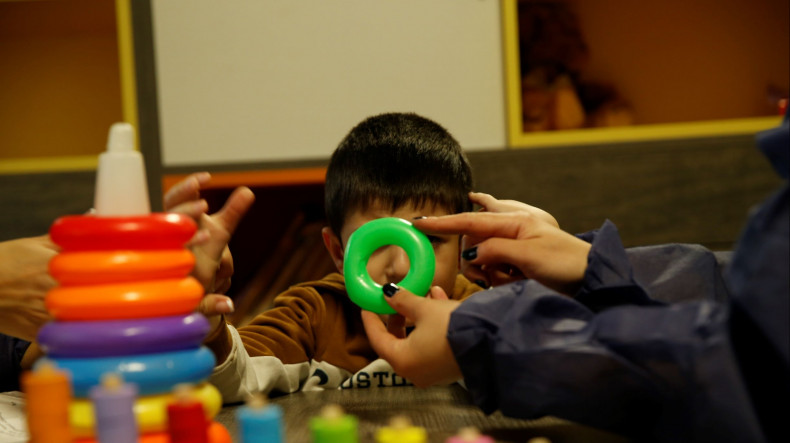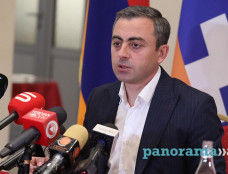
UNICEF: Nearly 240 million children living with disabilities around the world
The number of children with disabilities globally is estimated at almost 240 million, according to a new UNICEF report. Children with disabilities are disadvantaged compared to children without disabilities on most measures of child well-being, UNICEF Armenia says, citing the report.
“This new research confirms what we already knew: Children with disabilities face multiple and often compounding challenges in realizing their rights,” said UNICEF Executive Director Henrietta Fore. “From access to education, to being read to at home; children with disabilities are less likely to be included or heard on almost every measure. All too often, children with disabilities are simply being left behind.”
The report includes internationally comparable data from 42 countries and covers more than 60 indicators of child well-being – from nutrition and health, to access to water and sanitation, protection from violence and exploitation, and education. These indicators are disaggregated by functional difficulty type and severity, child’s sex, economic status, and country. The report makes clear the barriers children with disabilities face to participating fully in their societies and how this often translates to negative health and social outcomes.
Compared with children without disabilities, children with disabilities are:
• 24 per cent less likely to receive early stimulation and responsive care;
• 42 per cent less likely to have foundational reading and numeracy skills;
• 25 per cent more likely to be wasted and 34 per cent more likely to be stunted;
• 53 per cent more likely to have symptoms of acute respiratory infection;
• 49 per cent more likely to have never attended school;
• 47 per cent more likely to be out of primary school, 33 per cent more likely to be out of lower-secondary school and 27 per cent more likely to be out of upper secondary school;
• 51 per cent more likely to feel unhappy;
• 41 per cent more likely to feel discriminated against;
• 32 per cent more likely to experience severe corporal punishment.
However, the disability experience varies greatly. The analysis demonstrates that there is a spectrum of risks and outcomes depending on the type of disability, where the child lives, and what services they can access. This highlights the importance of designing targeted solutions to address inequities.
Access to education is one of several subjects examined in the report. Despite widespread agreement on the importance of education, children with disabilities are still falling behind. The report finds children with difficulty communicating and caring for themselves are the most likely to be out of school, regardless of education level. Out-of-school rates are higher among children with multiple disabilities and disparities become even more significant when the severity of the disability is taken into account.
“Inclusive education cannot be considered a luxury. For far too long, children with disabilities have been excluded from society in a way that no child ever should be. My lived experience as a woman with disabilities supports that statement,” says Maria Alexandrova, 20, a UNICEF youth advocate for inclusive education from Bulgaria. “No child, especially the most vulnerable, should have to fight for their basic human rights alone. We need governments, stakeholders and NGOs to ensure children with disabilities have equal, inclusive access to education.”
UNICEF works with partners at global and local levels to help realize the rights of children with disabilities. All children, including those with disabilities, must have a say in the issues that affect their lives, and be provided with the opportunity to realise their potential and claim their rights. UNICEF is calling on governments to:
• Provide children with disabilities with equal opportunities. Governments must work together with persons with disabilities to eliminate the physical, communication and attitudinal barriers that keep them out of society, and ensure birth registration; inclusive health, nutrition, and water services; equitable education; and access to assistive technologies. They must also work to eradicate stigma and discrimination across communities.
• Consult persons with disabilities and consider the full range of disabilities, as well as the specific needs of children and their families, when providing inclusive services and equitable quality education. This includes responsive caregiving and family friendly policies, mental health and psychosocial support, and protection from abuse and neglect.
The analysis seeks to increase the inclusion of the 1 in 10 children and young people with disabilities worldwide by ensuring they are counted, consulted and considered in decision-making.
The new global estimate for the number of children with disabilities is higher than previous estimates, and is based on a more meaningful and inclusive understanding of disabilities, which considers difficulties across several domains of functioning, as well as symptoms of anxiety and depression.
“Exclusion is often the consequence of invisibility,” said Fore. “We have not had reliable data on the number of children with disabilities for the longest time. When we fail to count, consider and consult with these children, we are failing to help them reach their vast potential.”
Situation in Armenia
• As 2020, there are 8,771 children with disabilities (CwD) officially registered in the Republic of Armenia of whom 2757 are girls. Source: Social Snapshot and Poverty in Armenia Report, 2020
• According to State Policy all schools are inclusive in Armenia. In 2021 an action plan for transition to fully inclusive preschool education system was adopted. (Source: https://escs.am/am/news/8453)
• As of 2020, there are 86,927 families receiving family and social benefits. Out of this number, 2933 are families with a child with disabilities, 3618 with a child deprived of one parent, 2726 of a single mother’s child, 32 of a child deprived of parental care, 7218 of divorced parents’ child. (Source: Social Snapshot and Poverty in Armenia Report, 2020)
• As of 2016, only 1/3 of registered children with disabilities are enrolled in preschool, while 2/3 of them do not receive rehabilitation services.
• Children with disabilities are most often deprived of their right to education due to very many factors ranging from physical inaccessibility and discriminatory attitude to lack of specialists and specialized teaching materials.
• COVID-19 has exacerbated some of these challenges and created new ones.
Newsfeed
Videos






























